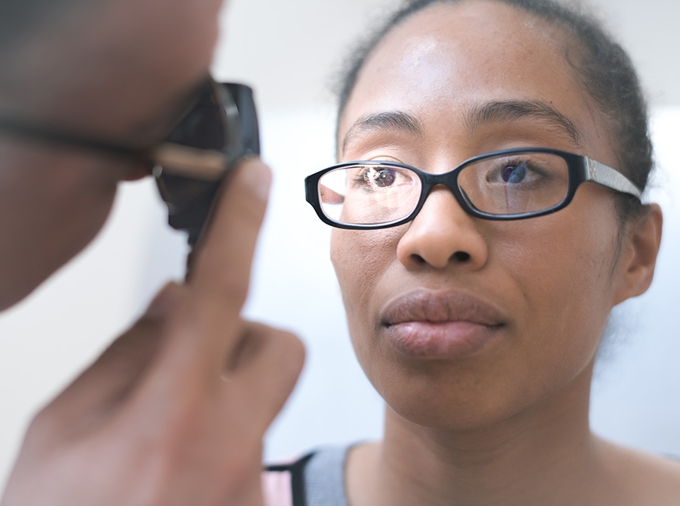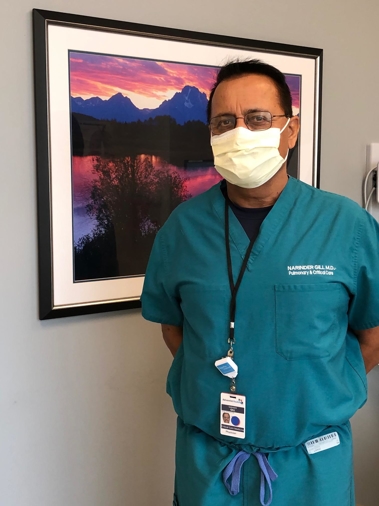Do you know your risk for lung cancer?
Nov 21, 2019

Lung cancer is the leading cause of cancer death among both men and women. In fact, more people die of lung cancer every year than of colon, breast and prostate cancers combined.
The good news? Now there's a way to screen for it. Contact our Adventist Health St. Helena medical office for more information(707) 963-026.
Until recently, there was no good screening method for lung cancer. That was before low-dose CT scans were found to be an effective way to find lung cancer early, at a more treatable stage. People at high risk for lung cancer are eligible for this test.
Who’s at high risk?
The good news? Now there’s a way to screen for it. Contact the Adventist Health St. Helena lung clinic for more information at (707) 963-6322.
You need to meet certain criteria to be considered high risk for lung cancer. Annual screening with a low-dose CT scan is recommended for adults ages 55 to 80 who:
- Have a 30-pack-year* smoking history.
- Currently smoke.
- Quit smoking within the past 15 years.
*Pack years are determined by how many cigarettes you smoked annually. You would have a 30-pack-year history if you smoked a pack of cigarettes a day for 30 years. You also would have a 30-pack-year history if you smoked two packs a day for 15 years, or three packs a day for 10 years.
Why are only smokers considered at high risk?
Smoking is the No. 1 cause of lung cancer, but there are other ways to get the disease. These include exposure to:
- Radon. Radon exposure is the second-leading cause of lung cancer. Radon is an odorless, invisible radioactive gas that resides in soil. It can come up through the soil and enter buildings and homes through small gaps and cracks. You can test your home for radon by purchasing an inexpensive test kit sold at most hardware stores.
- Hazardous chemicals. These include asbestos, uranium, arsenic, cadmium, chromium, nickel and some petroleum products. If you think you’re exposed to dangerous chemicals at work, talk with your supervisor about how you can protect yourself.
- Particle pollution.There is evidence that exposure to tiny particles of pollution increases the risk for lung cancer.
- Family history.A family history of lung cancer may also put you at higher risk for getting the disease. If members of your family have had lung cancer, let your doctor know.
Still, 90 percent of all lung cancers are caused by smoking. That makes high-risk smokers the most reasonable population to screen with low-dose CT scans.
Benefits and risks of screening
The main benefit of screening for lung cancer is saving lives. Lung cancer screening finds 80 percent of lung cancers at an early stage when they’re more treatable. Without screening, 70 percent of lung cancers are found at a later stage when there is small chance of a cure.
But there are some risks. For example, there is a low radiation exposure risk—a little higher than the dose women are exposed to when they get a mammogram.
There’s also the risk of false positives. This occurs when a test shows signs of cancer where actually there is none. This could expose a person to unnecessary follow-up tests, including biopsies. About 12 percent to 14 percent of initial lung cancer screenings result in false positives.
If you're at all concerned about your risk for lung cancer takethis Lung Cancer Screening Quizto find out if you’re eligible for testing and contact the Adventist Health St. Helena lung clinic, led by Dr. Ravindra N. Nallamothu, at (707) 963-6322 for your screening.
Related articles

Diabetes and Eye Health: Why Regular Screenings are Crucial
September 29, 2023

Fires, bad air quality and COVID-19: a triple threat for those with lung problems
August 21, 2020

Next-level Breast Cancer Screening with 3D Mammograms
November 8, 2022